INTRODUCTION
Welcome to the Hal Leonard Ukulele Method Book 1. This method has been designed to help you accomplish your goal of becoming a proficient ukulele player. While there are many styles and techniques to learn from, this book will focus on individual note or melody playing.
Once you begin, you will find that the ukulele is a magical little instrument that always seems to attract a smile. It really has the power to make people happy. Whether it is the novelty of its size or its infectious rhythmic nature, you can expect that your endeavors to play the uke will result in a lot of toe-tapping, finger-snapping, hand-clapping, and plain old-fashioned singing along.
Over time, you will also find that the ukulele’s potential extends far beyond the parameters of simple strumming to include fingerpicking, solo, lead and chord-melody playing, intricate strums, rolls, tremolo, slides, and a whole slew of rhythmic and novelty effects.
Practice may not always make perfect, but it sure helps to keep ya moving along. While it is important to work hard, please remember that music should first of all be fun! You don’t have to practice for ten hours a day in order to improve. Rather, strive for more consistent practice over shorter periods of time. With diligence, soon you will master important techniques and concepts.
Good luck and happy strumming!
—Lil’ Rev
Special Thanks to Jennifer Rupp, Will Branch, and Dennis Felber for technical assistance.
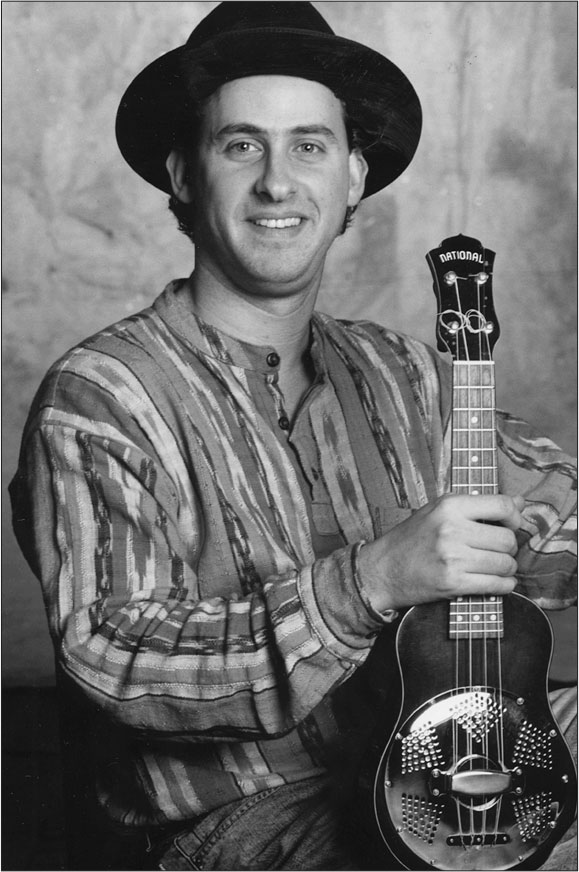
ABOUT THE AUTHOR
Lil’ Rev is a Milwaukee, Wisconsin-based award-winning multi-instrumentalist, writer, and music historian. He tours the U.S. teaching and performing original and traditional folk, blues, ethnic, and old-time music.
To learn more about Lil’ Rev’s schedule, recordings, or programs, visit www.lilrev.com
ABOUT THE AUDIO
The audio in this book contains recordings of select exercises and tunes within the lessons. Your goal should be to learn the piece well enough to play along with the recorded uke. Many examples have both chords and melodies written out, so you can play one part while the recorded uke plays the other.
Recorded at Velvet Sky, Milwaukee, WI
Engineered by Scott Finch
Performed by Lil’ Rev
A BRIEF HISTORY OF THE UKULELE
Most ukulele historians agree that the birth of the ukulele began in 1879, when Portuguese agricultural workers arrived in Honolulu aboard the English ship Ravenscrag. Many of these workers—like Augusto Dias, Manuel Nunes, Joao Fernandes, Joao Luiz Correa, and Jose do Espirito Santo—brought with them a remarkable ability to play the machete (a small guitar-like instrument with four cat-gut strings, the precursor to the uke). In turn, these workers also shared an intense passion for working with wood, and thus began a rich tradition of ukulele craftsmanship on the islands.
The year 1915 brought with it the Pan-Pacific International Exposition held in San Francisco. Here, the Hawaiian contingent and their beloved ukulele helped to spark its popular appeal amongst players and consumers alike. What followed were Hawaiian-themed songs and musicians, a sheet-music industry that regularly printed ukulele chord symbols on its music, uke-strumming Vaudeville entertainers, and mainland manufacturing companies like Martin, Gibson, Harmony, Lyon & Healy, and Epiphone all working overtime to meet the demand for quality ukes.
Some of the greatest players to emerge from this early era included Cliff Edwards (Ukulele Ike), Wendell Hall (The Red-Headed Uke Player), Johnny Marvin (Honey Duke), Roy Smeck, Frank Crumit, King Bennie Nawahi, Ukulele Bailey, and George Formby (in the UK).
 | 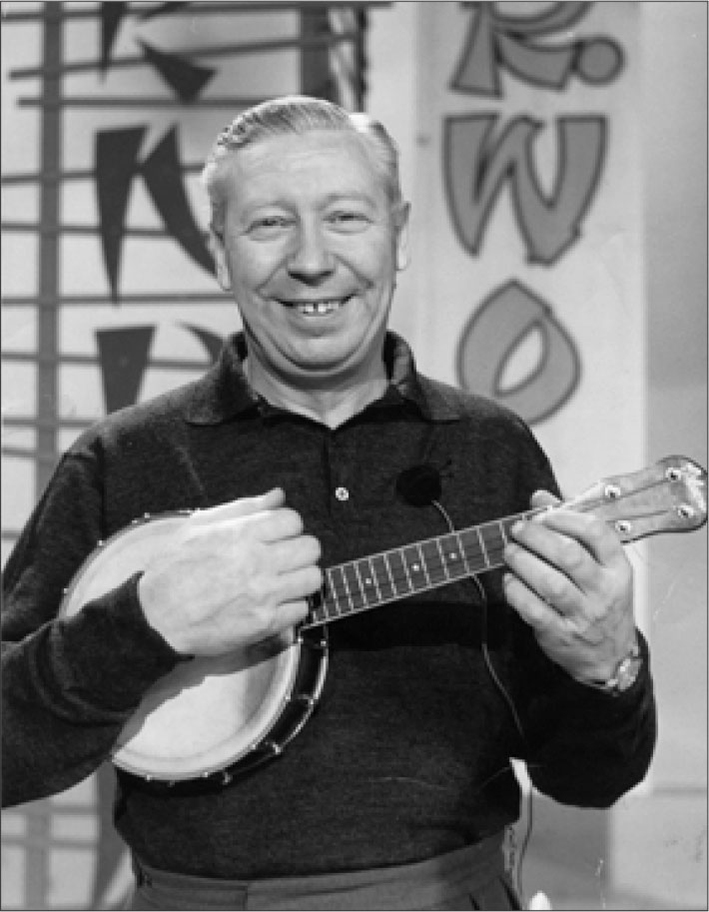 | 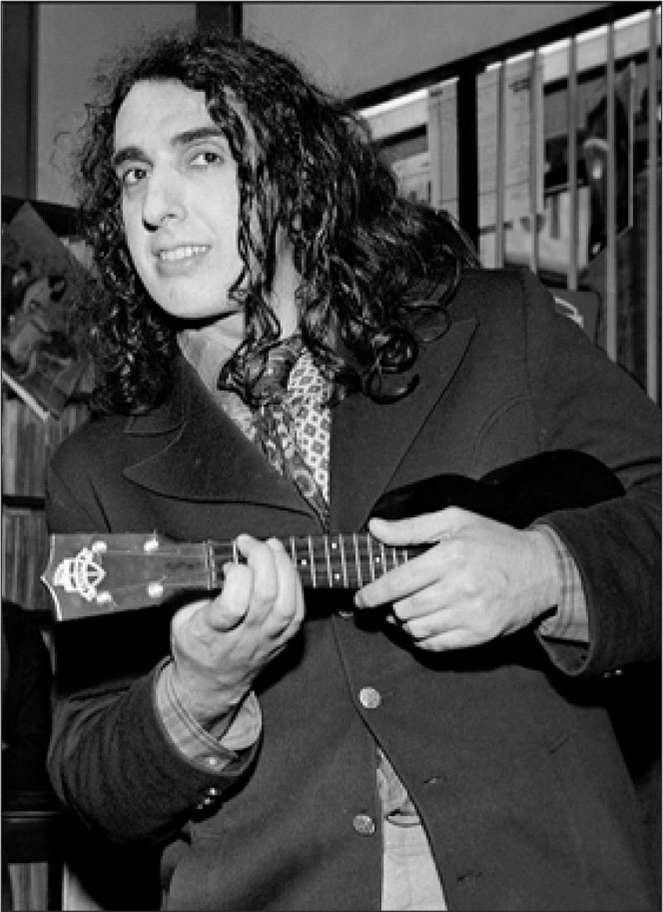 |
| Courtesy of David Garrick | From BBC Picture Archives/Redferns | Photo by Dick Barnatt/Redferns |
| Cliff Edwards: the Golden Voice of the 1920s and ’30s. | George Formby: the Uke Star of the U.K. | Tiny Tim: broke into pop culture with his novelty cover of the Nick Lucas tune “Tip Toe Through the Tulips.” |
While the depression years of the 1930s and the war years of the forties may have brought a temporary lapse of interest, uke hysteria began anew in the 1950s with the appearance of baritone uke player Arthur Godfrey, whose numerous television and radio appearances helped to put the ukulele back in the limelight. In the next decade, Tiny Tim’s 1968 novelty cover of the Nick Lucas tune “Tiptoe Through the Tulips” made quite a splash, and it’s safe to say it is still the best-known uke song amongst non-players in the U.S.
Today’s ukulele revival is experiencing a groundswell of interest amongst both the young and old, while drawing from traditional and eclectic sources. There is a vitality to the current crop of professional players, all of whom treat the uke with a lot of historic respect while continuing to push the envelope in many new directions. We are just as likely to hear Canadian virtuoso James Hill play his incredible rendition of the “Super Mario Brothers” theme as we are to hear the young Hawaiian star Jake Shimabukuro play Paul Simon’s “Mrs. Robinson,” or for that matter, ukulele guru Jumpin’ Jim Beloff croon the classic “Bye Bye Blackbird.”
So ya see, once you learn the basics of picking and strumming, the sky is the limit… for the history is still being written!
YOUR UKULELE
This book is designed for use with any type of soprano, concert, or tenor ukulele—whether they are wood-bodied, banjoukulele, or resonator-style ukuleles. You may use any of these models to study the music in this manual.

PLAYING POSITION
There are many ways to hold your ukulele comfortably. Typically, you will be seated, but you may find it necessary to stand on occasion. See what works best for you.
 |  | 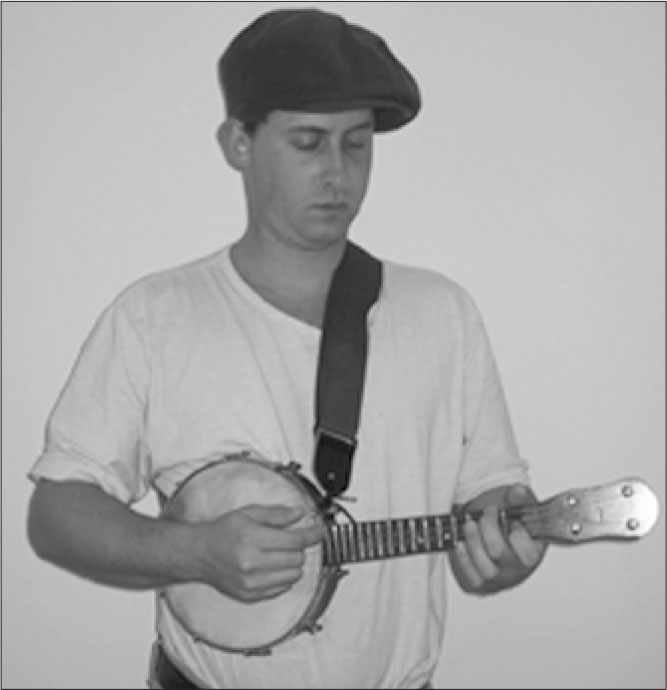 |
| The seated position allows you to rest the uke on your right leg. Or, apply a small amount of pressure with your right forearm to press the uke up against your right side rib cage. | The standing position takes a little more getting used to. You must apply a little more pressure with your right forearm to keep the uke in place. | Some folks like to use a strap to hold their uke in place. |
THE RIGHT HAND
Once you are comfortable holding the uke, you will need to become familiar with the proper hand, thumb, and finger positions so that you will be able to pick and strum properly.
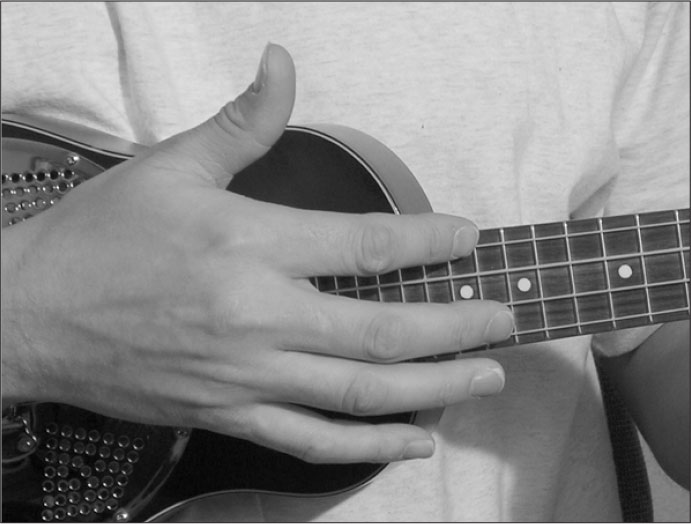 | 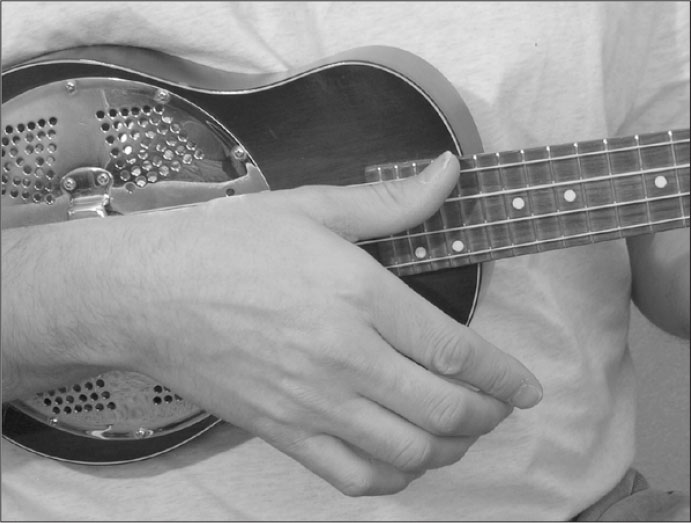 |  |
| Hand | Thumb | Finger |
| Hold your hand just slightly above the sound hole with your fingers extended over the fretboard. | Place your thumb over the lower end of the fretboard for a gentle brush. | Slightly curl your right pointer finger inward and place it just above the tenth fret (you’ll learn more about fret numbers soon). |
TUNING
When you tune your ukulele, you will adjust the pitch (highness or lowness) of each individual string. When you tighten a string you will raise the pitch. When you loosen a string you will lower the pitch.
TUNING TO THE AUDIO
The strings on your uke are numbered 1 through 4, with string 4 being the one closest to your chest. This book uses the standard C tuning (the most common ukulele tuning), so your uke would be tuned as follows:
| Pitch: | G | C | E | A |
| String: | 4 | 3 | 2 | 1 |
Listen to the correct pitch given on the audio track and gently turn the tuning key until the sound of each string matches the sound on the track.
TUNING WITH AN ELECTRONIC TUNER
An electronic tuner will “hear” whether or not your strings are in tune, allowing you to adjust them to the correct pitch. While I advocate learning how to tune by ear (being able to recognize and match the sound of a pitch without the help of a machine), an electronic tuner can be real handy when you are just starting out and have not yet developed the ability to recognize in-tune pitches. A tuner’s accuracy and efficiency make it a useful tool.
TUNING BY EAR
Tune the G string (string 4) to a reliable source like a piano, tuning fork, or pitch pipe. Then tune the other strings to the following notes to create this musical phrase (as heard on the first audio track):

RELATIVE TUNING
Often, you may have to tune your instrument to itself when there is no other source available. To do this, follow these steps:
- Assume the third string is tuned correctly to C.
- Press down on the third string behind the fourth fret (E) and tune the second string until they sound alike.
- Press down on the second string at the fifth fret (A) and tune the open first string to it.
- Finally, press down on the second string above the third fret (G) and tune the fourth string to it.
When all of the strings are in tune, they will sound out the familiar musical phrase:

MUSICAL SYMBOLS
Music is written with notes on a staff. The staff has five lines and four spaces between the lines. Where a note is written on the staff determines its pitch (highness or lowness). At the beginning of the staff is a clef sign. Ukulele music is written in the treble clef.

Each line and space of the staff has a letter name. The lines are (from bottom to top) E–G–B–D–F, which you can remember as “Every Good Boy Does Fine.” The spaces are (from bottom to top) F–A–C–E, which spells “face.”

The staff is divided into several parts by bar lines. The space between two bar lines is called a measure (also known as a “bar”). At the end of a piece of music a double bar is placed on the staff.

Each measure contains a group of beats. Beats are the steady pulse of music. You respond to the pulse or beat when you tap your foot.
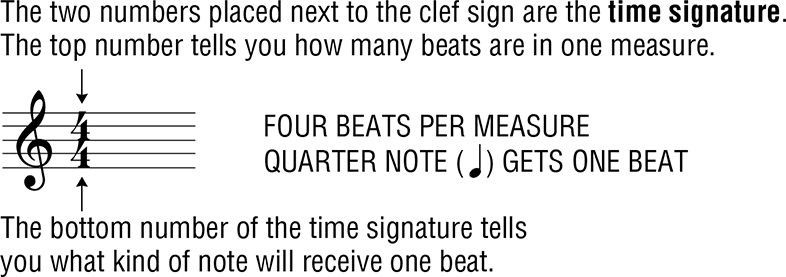
Notes indicate the length (number of counts) of a musical sound.
NOTE VALUES A WHOLE NOTE = 4 beats, C HALF NOTE = 2 beats, D QUARTER NOTE = 1 beat
When different kinds of notes are placed on different lines or spaces, you will know the pitch of the note and how long to play the sound.